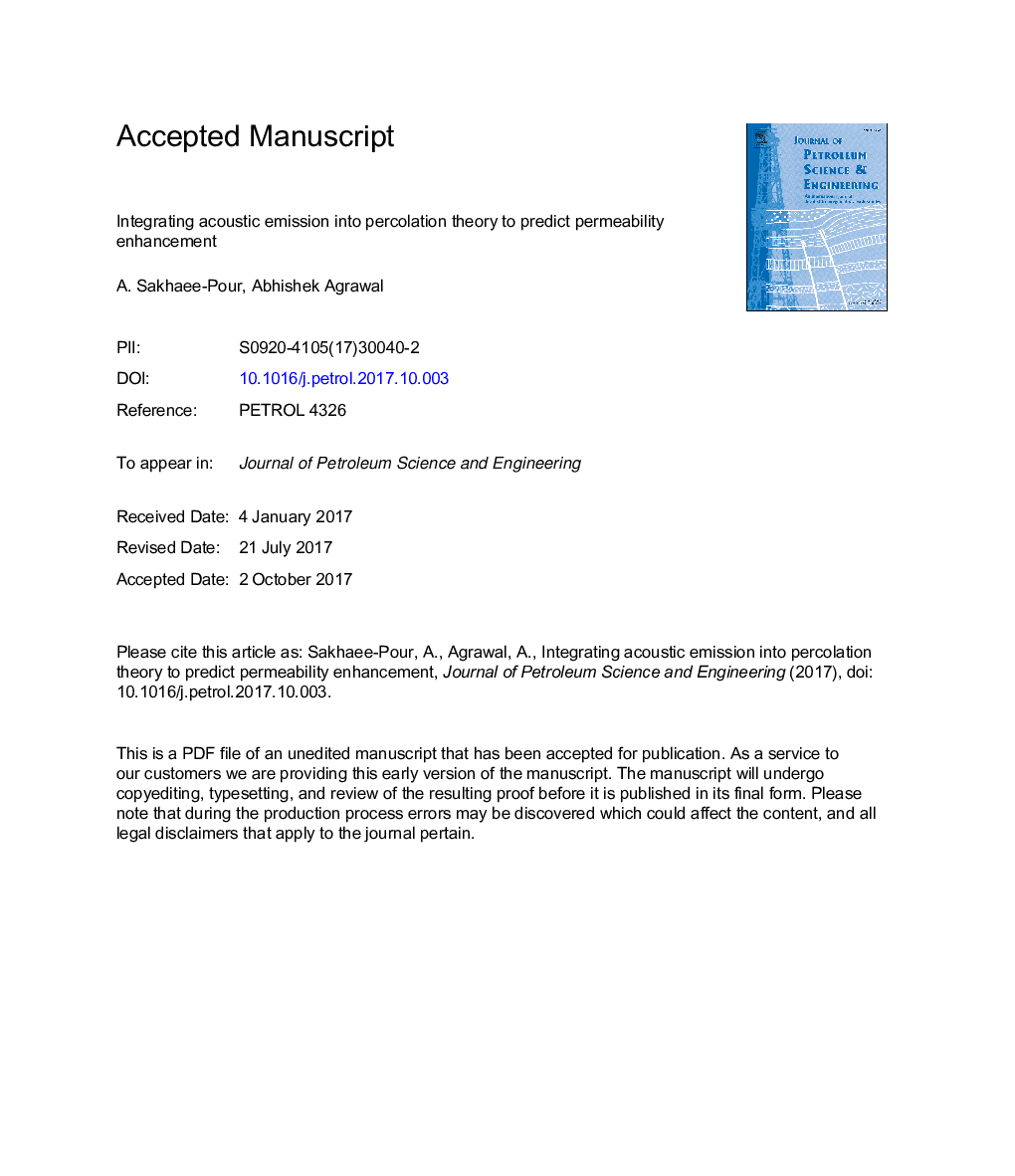| Article ID | Journal | Published Year | Pages | File Type |
|---|---|---|---|---|
| 8125479 | Journal of Petroleum Science and Engineering | 2018 | 38 Pages |
Abstract
Hydraulic fracturing allows us to enhance the transport properties of a tight formation, but it remains difficult to predict the enhancement as a function of recorded acoustic events. With this in mind, we initiate pore-scale modeling of acoustic emission (AE) events based on percolation theory. The main objective is to predict the permeability enhancement by accounting for the number of AE events. We first develop a physically representative model of the intact pore space of the matrix of Tennessee sandstone at the core scale based on petrophysical measurements, which are porosity, permeability, and capillary pressure. A block-scale sample of the formation is then hydraulically fractured, where piezoelectric sensors record the events generated during stimulation. We predict the permeability enhancement of the formation at the core scale by accounting for the number of AE events per unit volume. Independent petrophysical measurements corroborate the predicted results based on percolation theory. The proposed model has major implications for characterizing the transport properties of the stimulated reservoir volume.
Related Topics
Physical Sciences and Engineering
Earth and Planetary Sciences
Economic Geology
Authors
A. Sakhaee-Pour, Abhishek Agrawal,
